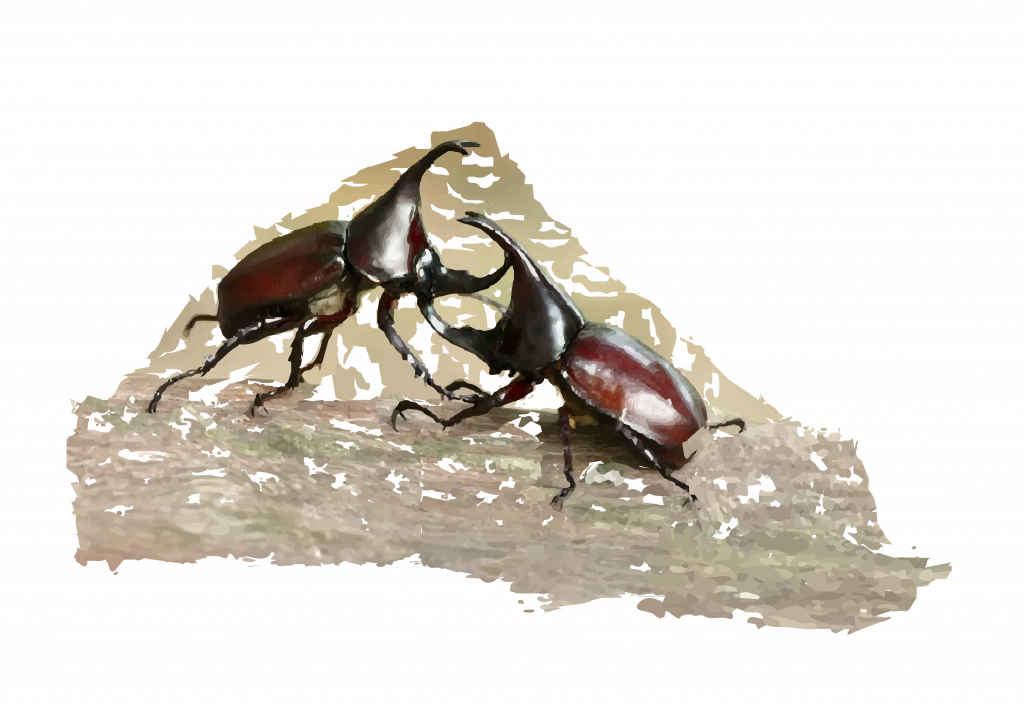2.14 Sexual Selection
Sexual selection is a type of natural selection
Natural selection refers to evolutionary change that occurs when heritable adaptations confer a reproductive benefit that, in turn, changes the gene variant frequencies in a population. Sexual selection specifically refers to evolutionary change as a result of adaptations related to mate attraction, copulation itself, or mate retention. Sexual selection is at work when the peacock with the most elaborate feathers attracts the most peahens, and when male hercules beetles engage in combat (Figure 2.18) for sexual access to females. We’ll explore sexual selection further in Chapter 9.

Is there a distinction between natural and sexual selection?
Sexual selection is a type of natural selection. With sexual selection, as with natural selection, adaptations can be anatomical (e.g., the long, corkscrew penis of the mallard duck), biochemical (e.g., the excessive production of testosterone by human males in the peak of courtship), or behavioral (e.g., the courtship song of the chickadee). As with natural selection, sexual selection involves adaptive change as a result of fitness benefits enjoyed by those with the adaptation(s). However, sexual selection does not involve adaptations that strictly concern survival, and is therefore more limited in its scope. In other words: all forms of sexual selection are natural selection, but not all natural selection is sexual selection.
Content on this page was originally published in The Evolution and Biology of Sex by Sehoya Cotner & Deena Wassenberg and is reproduced here in compliance with the original CC-BY-NC 4.0 license.

